Rose Jam Kyiv Style
If I had to select a few ingredients that define Ukrainian cooking for me, it would be tomatoes, pork and roses. Tomatoes are essential for borsch, stuffed peppers, ragouts and salads. Pork is eaten in all guises, from lightly salted belly fat to roasted ham and garlicky sausages. Roses, on the other hand, are all about sweetness. Almost every yard in our small village near Poltava has a shrub of the so-called jam roses, usually the rosa damascena variety. Rose jam fills the Christmas pampushky, sweet doughnuts, strudels, crescents and crepes. Best of all, it’s eaten alongside a cup of black tea, a taste of Ukrainian summer at its most opulent. (Despite the common stereotypes, Ukraine is not covered with snow for most of the year. Not only is it large enough to contain different climatic zones, the summers are long, hot and bountiful.)
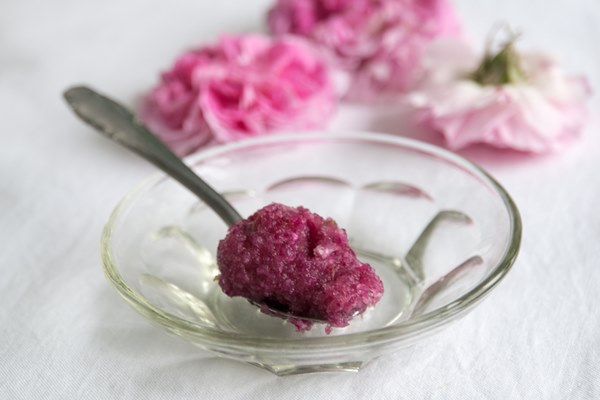
Ever since I’ve revived my great-grandmother’s roses, I’ve been trying different rose jam recipes, such as this delight I shared two years ago. This summer’s experiment is the Kyiv style rose jam, a variety of preserve made without a drop of water. Raspberries, strawberries, blueberries, gooseberries and cherries are the most common fruits used in Kyivske varennia, Kyiv style jam. The fruit is cooked in syrup and then drained and rolled in fine sugar. The result is more of a sweetmeat than the usual runny conserve. The rose jam Kyiv style is different, however. The rose petals are crushed with sugar and no cooking is required.
This recipe also comes from my great-grandmother Olena’s cookbook. “200g of sugar for every 100g of petals; use it to stuff sugar dough crescents,” she writes. The instructions are simple–trim the white part of the petals, pound into paste with sugar and add a spoonful of lemon juice to preserve color.
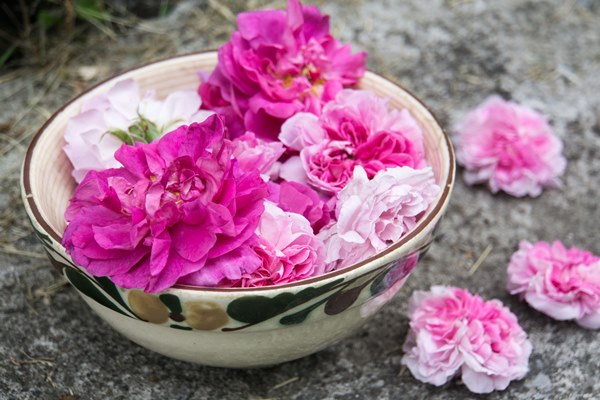
The roses used for jam can be any fragrant variety with thin, delicate petals. Since you don’t wash them before making jam, be sure that your roses are unsprayed. Pick them in the morning after the drew has dried and after trimming the corollas, shake the petals to remove any bits of stamens and leaves.
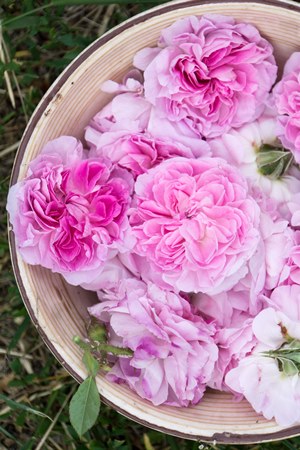
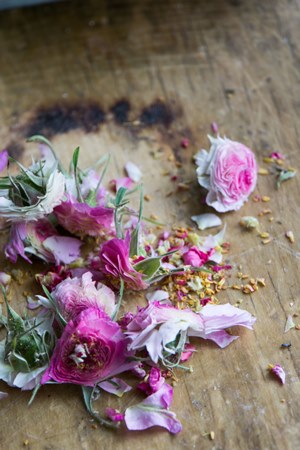
At home I probably would have whirred the whole thing in a blender, but at my grandmother’s place there was only a wooden pestle, so the old-fashioned method it was. I didn’t miss any of the conveniences, however, because making this jam is such a heady and fragrant activity that I didn’t need to rush it. If the aroma of fresh roses was intense, pounding the petals with sugar crystals amplified it to the point that it felt like a tangible presence–honeyed, sweet, with a touch of clove and raspberries.
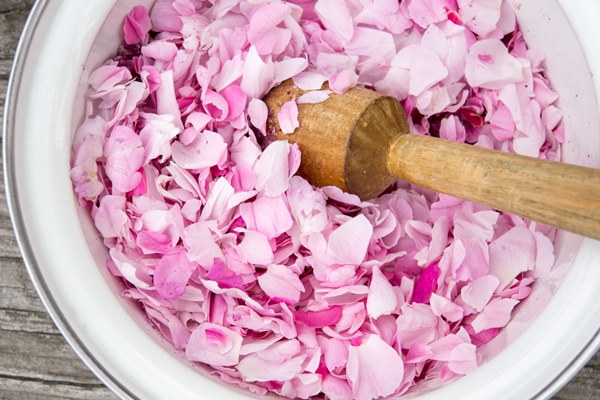
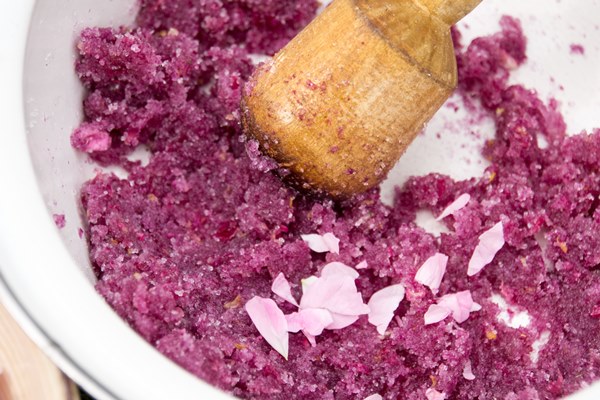
I store the jam in the fridge. It’s uncooked, but the high proportion of sugar should prevent spoilage. If you’re making larger quantities, freeze them. I eat rose jam over yogurt, mixed into kefir or milk for a sweet shake or simply dissolved in a glass of mineral water for a cooling summer drink. You can use it as filling for Ukrainian walnut crescents. You can also add a layer of rose jam when making solozhenyk, millefeuille crepe cake. The color keeps well, and the flavor becomes more intense with maceration.
Olena also notes that Kyiv style rose jam is “a great cure for colds and winter pallor.” As if one could doubt it.
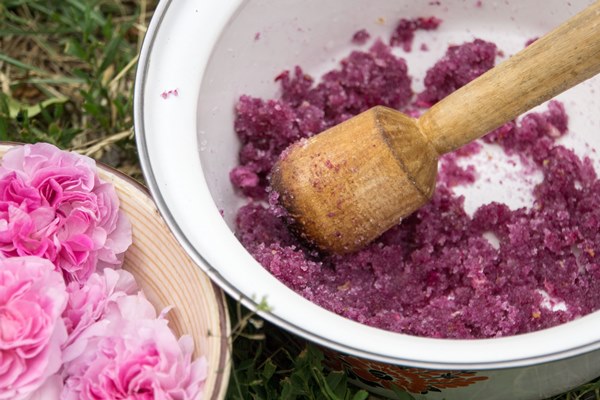
Kyiv Style Rose Jam (Київське Трояндове Варення)
From my great-grandmother’s Olena’s cookbook
The proportion of petals to sugar is 1:2 by weight, but some varieties are slightly bitter, so you might want to increase the sugar proportion slightly.
Do yourself a favor; use a pestle. I didn’t even have the mortar, so I pounded the jam in a heavy bowl. Sugar makes it easy to crush the petals. Pound as if you want to crush each petal into pulp, and soon enough you will have a dark fuchsia colored pomade.
Makes 1 one pint jar
125 g (1/4 pound) fresh, unsprayed and fragrant rose petals (after cleaning, see below)
250-300 g (2 1/4 – 2 1/2 cups) sugar
Juice of 1/2 lemon
The jam is uncooked, so make sure that all of the implements you use for making it–mortar, pestle, bowls, spoons are cleaned in hot water with baking soda and then rinsed with boiled water.
If you’re picking roses yourself, gather whole flowers in the late morning when their perfume is at its strongest. Spread them out on a towel. Holding each flower upside down, snip the petals around the heart of the flower using scissors. Shake the petals in a colander to remove stamens and weigh them. You should have 125g.
Mix with sugar and process with a blender or use a mortar and pestle to reduce petals to thick, perfumed paste. For this quantity of petals, it would take about 15 minutes. Add lemon juice and mix well.
Spoon jam into sterilized jars (how to sterilize jars). Seal immediately by closing the lid of the jars tightly. Store in a refrigerator. If you’re making larger quantities, consider freezing them.
Photography by Bois de Jasmin

Post a Comment